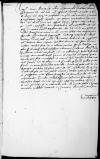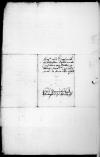Letter #126
Ioannes DANTISCUS & Nikolaus NIBSCHITZ (NIPSZYC) to Sigmund von HERBERSTEINCracow (Kraków), 1518-[02]-21
Manuscript sources:
Prints:
| ||||||
Text & apparatus & commentary Plain text Text & commentary Text & apparatus
Magnifico domino
Magnifice Domine, amice noster multum observande, commendationem plurimam.
Accepimus Magnificentiae Vestrae litteras[2] nobis apprime caras utpote a domino et amico nostro carissimo profectas, in quibus nobis eventus Suos cum grassatore
[1 ]
[2 ] Unknown letter
[3 ] Niklas Tschaplitz (Czaplitz) von Altendorf, a Moravian nobleman, attacked Herberstein and his retinue before Olomouc, as Herberstein mentioned in Selbstbiographie (Herberstein 1855, p. 131) and described in detail in Rerum Moscoviticarum commentarii: Lipnik, 1 miliari unde cum Vuistriciam 2 miliaribus recta contendentes, forte ex quodam colle Nicolaus Czaplitz, eius provinciae nobilis, sibi nos obvios conspexisset, mox pixide arrepta, ad conflictum se quodammodo cum duobus comitibus praeparabat. Qua re equidem non temeritatem hominis, sed ebrietatem potius animadverteram, ac continuo servitoribus mandaveram, ut ei nobis occurrenti media via cederent. Sed ille hoc humanitatis officio neglecto, in altam nivem se coniecerat, nosque praetereuntes torve intuebatur, servosque a tergo cum vehiculis sequentes, ad hoc ipsum genus officii, quod illi praestare haudquaquam poterant, cogebat strictoque gladio minabatur. Ea re exorto utrinque clamore factoque servorum, qui post erant, concursu, ipse mox telo balistae laesus, equus pariter vulneratus sub eo conciderat. Postea cum Moscis oratoribus iter institutum prosecutus, veni Olmutzium (Herberstein 1556, p. 144, cf. Herberstein 1557, § 629). We can guess that Herberstein described his adventure in a similar way in his unknown letter to Dantiscus and Nipszyc (see footnote 3)
[4 ] Consuevit enim fortuna — — ante ipsam bonorum metam, aculeis suis — — ferire cf. Petrarca, Africa, 5, 314-7):
[5 ] Vilnius (Pol. Wilno), the capital of the Grand Duchy of Lithuania, hereditary stateof Sigismund I, which was in a union with the Kingdom of Poland. Vilnius lower castle was the main residence of Polish kings in their capacity as grand dukes of Lithuania. Mikołaj Radziwiłł (c. 1470-Oct./Nov. 1521), Vilnius voivode and chancellor of the Grand Duchy of Lithuania (1510). As an official participant in the Vienna congress of 1515, he must have met Herberstein there for the first time, and certainly won the special favor of Maximilian I. which is linked to the person of Vilnius voivode Mikołaj Radziwiłł, whom Herberstein probably met during the congress in Vienna in 1515. Radziwiłł is mentioned in the letter of dedication of Mikołaj Hussowski’s Carmen de statura, feritate ac venatione bisontis (Cracow 1523), in connection with providing a bison hide for Pope Leo X. Herberstein must have known Carmen, and taken the report on an unusually large bison from it (see Baczkowski, p. 226; Hussoviani carmina , p. 4-5, p. 10, lines 53-54 and ibidem footnote 2, cf. Herberstein 1556, p. 109; cf. Introduction, p. !!! and Plate 4)
[6 ] Sending Herberstein the bison and auroch hides and the elk antlers and hooves was most likely the consequence of his recent visit to the vivarium of the grand dukes of Lithuania in Troki. The reason was both Herberstein’s interest in zoology and the widespread use of animal material as medications. Mentioning in Rerum Moscoviticarum commentarii that the Polish king had given him the hide of an auroch, Herberstein explained how strips of auroch hide were used during childbirth: Sigismundus Augustus rex mihi apud se oratori donavit exenteratum unum (scil. urum) , quem venatores eiectum de armento semivivum confecerant: recisa tamen pelle, quae frontem tegit, quod non temere factum esse credidi, quanquam cur id fieri soleret, per incogitantiam quandam non sum percontatus. Hoc certum est, in pretio haberi cingulos ex uri corio factos et persuasum est vulgo, horum praecinctu partum promoveri. Atque hoc nomine regina Bona, Sigismundi Augusti mater, duos hoc genus cingulos mihi dono dedit: quorum alterum serenissima Domina mea Romanorum Regina, sibi a me donatum, clementi animo accepit (Herberstein 1556, p. 110). Olaus Magnus described how spasms were treated with strips of auroch hide: Corium urorum cum pilis balthei more scissum corporique spasmum patientis circumligatum, illico confert; unde et mos genti est, ubi bestiae hae capiuntur, hospitibus gratis dono offerre cingula (Magnus 1555, p. 633, cap. XXXVI: Adhuc de eisdem Uris et captura eorum). Elk hooves were considered a medicine mainly for epilepsy, but also for jaundice or headache (see Magnus 1555, p. 601: De Alcium medicinis dextri pedis et captura earum, por. Kromer, p. 35; Marchwiński, p. 158). Stanisław Hozjusz and Marcin Kromer often dispatched this medication to Italy (see Iulii Ruggieri relatio generalis (1568) [in:] ANP, VI, p. 149). Herberstein described the elk, highlighting the therapeutic properties of its hooves: Quae fera Lithuanis sua lingua Loss est, eam Germani Ellend, quidam Latine Alcen vocant: Poloni volunt onagrum, hoc est asinum agrestem esse, non respondente forma. Sectas enim ungulas habet: quanquam et quae solidas haberent, repertae sint, sed id perrarum est. — — Ungulae, tanquam amuletum, contra morbum caducum gestari solent (Herberstein 1556, p. 110, cf. Herberstein 2007, p. 355-356, cf. Kromer, loc. cit). See also Introduction, p. 41-43 and letter No.31, footnote 8
[7 ] The elk was called Elend in German, which could also mean „miserable” (Lat. exul ). In the 16th century, though, the Slavonic form Elend was being ousted by the Germanic Elch, which appears for instance in Seweryn Boner’s letter to Herberstein from 1541 (Elchen Horner). See Harrauer 1982, p. 143
[8 ] Lorenz Saurer (c. 1465-1523), son of the town councillor and mayor of Salzburg, Georg Saurer. He began his career in the court sewing room of Emperor Maximilian I, going on to become the castellan (Burggraf) of Vienna and head of the cellarers (Vorsteher des Kellermeisteramtes) of Vienna (1503), and from 1508 occupied the privileged post of financial governor (Vizedom von Österreich unter der Enns or in brief: Vizedom zu Wien); From 1510 he was an imperial court counsellor, from 1512 member of the Lower Austrian government in Vienna (Regierungsbehörde für die sogenannte niederösterreichische Ländergruppe: Österreich unter und ob der Enns, Steiermark, Kärnten und Krain). In 1518 he welcomed Bona Sforza (see letter No. 11, footnote 7) to Vienna, and attended her coronation in Cracow (see Wiesflecker V, p. 265-270; Pociecha, I, p. 231)
[9 ] After being recalled to Poland in mid-1517, according to the emperor’s earlier wishes Dantiscus was supposed to return to the imperial court in early February 1518 (cf. Introduction, p. !!!). However, he did no set off for his next mission to Maximilian I and Charles I von Habsburg, King of Spain, until October 1518, to arrange for Bona Sforza’s mother, Isabella d’Aragona duchess of Milan (see letter No. 11, footnote 8), the taking over of the inheritance from her aunt, queen of Naples Giovanna IV (d. August 28, 1518) (see Pociecha, II, p. 134, 211-213)
[10 ] Dating this letter in January seems a mistake on Dantiscus’ part. The adventure with Tschaplitz (see footnote 4) took place near Olomouc, which was the final stage onHerberstein’s return journey from Muscovy to Vienna, after his stay in Cracow.Herberstein gives contradictory information in Selbstbiographie abouthis return (Herberstein 1855, p. 131-132, cf. Herberstein 1560, f. B4r): first saying that on January 25 he arrived in Cracow, leaving on February 6, but writing elsewhere that he arrived in Vienna on January 20. In fact, though, Herberstein must have arrived in Vienna on February 20, and the mentioned letter is a reply to an unknown letter by Herberstein written on his way to Vienna (as also suggested by the formula containing wishes for a successful continued journey – felices successus et secundius iter Magnificentiae Vestrae imprecantes and – in the address: redeunti ). It is therefore probable that Dantiscus and Nipszyc’s joint letter was written on February 21, 1518 (we know that Dantiscus was in Cracow on February 20, and wrote to Ioachim Vadian from there, see Die Vadianische Briefsammlung , vol. I, No. 30, p. 112 (with the erroneous date 1514); cf.Introduction, p. !!! )
[11 ] At the royal court in Cracow, Nipszyc with Dantiscus and Jan Zambocki formed a triumvirate of friends who were the front runners of the famous court society known as Bibones et comedones, hence he was often referred to simply as Tertius . In 1519 he went on his first mission from the Polish king to Albrecht von Hohenzollern, the grand masterof the Teutonic Order, and from 1525 until his death was at the Polish court the official (acknowledged by Sigismund I) representative, paid agent and information source of Albrecht as the “duke in Prussia”. An analysis of his letters to the duke from just 1532-34 (AT, XIV-XVI) shows that despite constantly providing information about Polish issues, international affairs were the priority in his reports (Szymaniak, p. 162, footnote 492). Nipszyc informed the duke about these matters very often by sending him news that came from Herberstein, sometimes his letters copied in extenso, or extracts from them (beside the already mentioned volumes of AT, see e.g. Elementa, XXXVI, No. 707, p. 166-167, XLVI, No. 13, p. 26 (conclusion), XLVII, No. 227, 233, 271). From 1525, Nipszyc went on several missions as Sigismund I’s envoy: to Hungary (1525 and 1526), to Ferdinand I (congress in Wrocław (Breslau), 1527, then 1531-1533, 1537), to the assemblies of Royal Prussia (1531, 1534), to Brandenburg (1535-37, 1540) and to the estates of Livonia (1536). During the royal court’s stay in Vilnius from April 1528 to October 1529 (cf. letter No. 13), he defended the interests of Albrecht von Hohenzollern, duke in Prussia, in Prussian-Lithuanian border relations. In 1535 he brought about the marriage of princess Jadwiga Jagiellon and margrave Joachim von Hohenzollern – the future Brandenburg elector. In later years he enjoyed good relations with Dantiscus and also with Tiedemann Giese, who entertained Nipszyc at Dantiscus’ request in 1537, drinking with him all night and probably playing dice or cards. Nipszyc loved to play cards, in an effort to improve the constantly poor condition of his finances (see Borawska 1996, p. 111-112 and ibid. footnote 62 with the archive addresses of the correspondence of Dantiscus, Giese and Nipszyc from 1537; Oracki, II, p. 60-61; Pociecha, II, p. 23-24; Szymaniak, p. 65-103, 162, footnote 492, 167-171)

